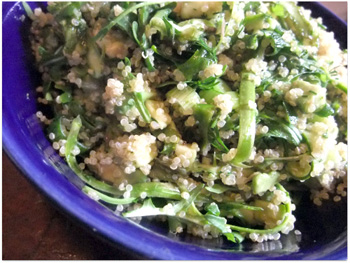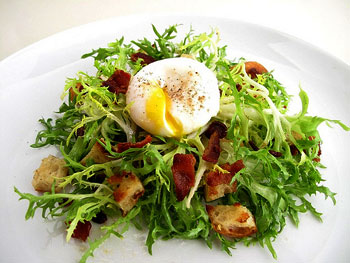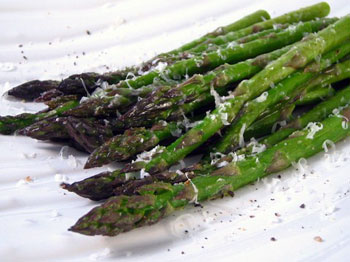 Many vegetables take the spring spotlight: asparagus, fresh peas, and fava beans, among others. And then there a few humbler ones that fall to the wayside, like small bright-red radishes.
Many vegetables take the spring spotlight: asparagus, fresh peas, and fava beans, among others. And then there a few humbler ones that fall to the wayside, like small bright-red radishes.
Many people don't give a second thought to radishes, more or less ignoring them in the market. But it's just not right, and we're going to right this wrong.
Besides just eating radishes raw with salt or on a piece of buttered bread (a HuffPost Taste favorite), radishes can add a lot of interest to recipes, like a great crunchy texture and peppery, spice-y flavor.
You'll find the best radishes are available now, during spring when they're the most delicate.

 Ah, Spring! We are enjoying a warm spell right now and the fresh produce reflects the change of seasons with earthy root vegetables giving way to tender bright greens. I am so happy to have sunshine and bright green asparagus to eat!
Ah, Spring! We are enjoying a warm spell right now and the fresh produce reflects the change of seasons with earthy root vegetables giving way to tender bright greens. I am so happy to have sunshine and bright green asparagus to eat! Salade Lyonnaise is one of the most popular salads in small French restaurants and bistros. In Lyon, from where the salad originates, it is typically found on the menus of tiny eateries called Bouchons, which specialize in comfort foods such as soups, stews, sausages, cheeses, etc. You can most certainly also find this salad served at Thomas Keller's Bouchon and at many of the restaurants of Lyon native Daniel Boulud. Comfort food knows no boundaries of class. It is simply just that popular that both high and low places offer it. And why wouldn't this salad be comforting? It is made of lettuce, croutons, bacon, and a poached egg perched on top.
Salade Lyonnaise is one of the most popular salads in small French restaurants and bistros. In Lyon, from where the salad originates, it is typically found on the menus of tiny eateries called Bouchons, which specialize in comfort foods such as soups, stews, sausages, cheeses, etc. You can most certainly also find this salad served at Thomas Keller's Bouchon and at many of the restaurants of Lyon native Daniel Boulud. Comfort food knows no boundaries of class. It is simply just that popular that both high and low places offer it. And why wouldn't this salad be comforting? It is made of lettuce, croutons, bacon, and a poached egg perched on top. "I never thought I'd be eating asparagus, much less for breakfast."
"I never thought I'd be eating asparagus, much less for breakfast." To the uninitiated, the boysenberry may look like a big, blowzy, underripe blackberry, but it is in fact a noble fruit, as distinct from a common blackberry as a thoroughbred is from a mule.
To the uninitiated, the boysenberry may look like a big, blowzy, underripe blackberry, but it is in fact a noble fruit, as distinct from a common blackberry as a thoroughbred is from a mule.
